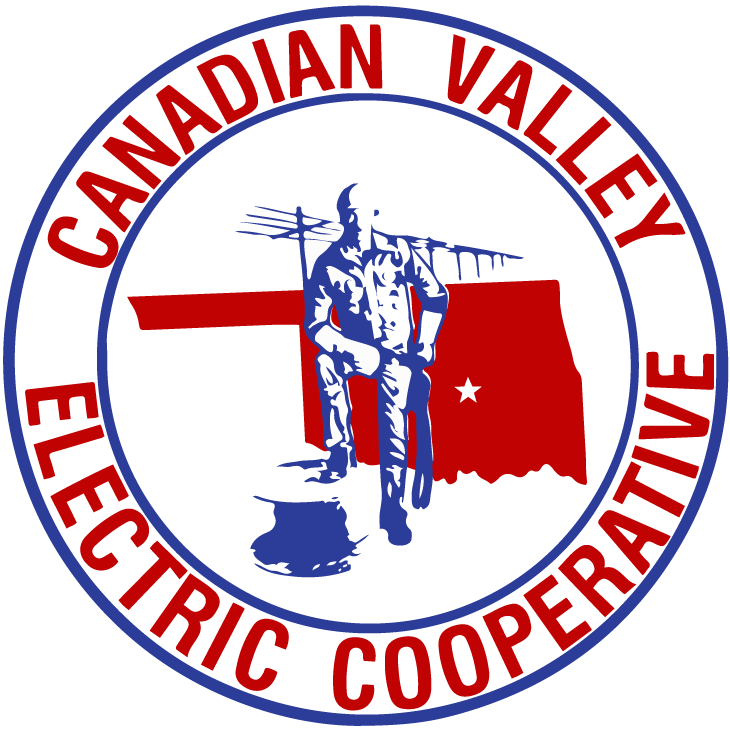Understanding Right-of-Way and Easements: What CVEC Members Need to Know
At Canadian Valley Electric Cooperative (CVEC), ensuring reliable and safe electric service for our members is our top priority. One of the essential aspects of maintaining our power lines and infrastructure is having access to the designated areas known as utility easements and rights-of-way. Understanding these terms can help homeowners and property owners make informed decisions about their land and landscaping.
What is a Right-of-Way?
A right-of-way is an agreement that allows a utility company to use or access a portion of property according to the terms of an easement. These agreements ensure that CVEC can maintain power lines, make necessary repairs, and restore service efficiently in case of an outage or emergency.
What is an Easement?
Easements are designated areas for overhead and underground utility access, typically established when a lot or neighborhood is first platted. These easements help utility companies provide service in the most efficient and cost-effective manner by running utility lines in straight paths rather than navigating around individual properties.
Why Do Easements and Rights-of-Way Matter?
Having designated utility easements and rights-of-way ensures that power lines can be properly maintained, reducing outages and keeping our communities safe. This access allows CVEC crews to trim trees, replace poles, and repair infrastructure without unnecessary delays.
CVEC's Right to Maintain the 30-Foot Easement
To ensure the safety and reliability of our electric service, CVEC has the right to cut or remove trees within the 30-foot easement along power poles and lines. Overgrown vegetation can interfere with power lines, leading to outages, safety hazards, and increased maintenance costs. Keeping these areas clear allows our crews to work efficiently and maintain uninterrupted service for all members.
Tree Planting and Right-of-Way Considerations
If you’re planning to plant trees on your property, it’s important to consider their location carefully. Trees planted in the wrong areas can interfere with power lines, leading to costly maintenance, potential outages, and safety hazards.
Call 8-1-1 Before You Dig – This free service will mark public underground utilities, such as electric, gas, water, cable, and fiber, to prevent accidental damage.
Avoid Planting Directly Under Power Lines – Trees should never be planted directly under lines, near poles, or too close to electrical equipment.
Choose the Right Tree Species – If planting near power lines, select trees with a mature height of fewer than 15 feet, such as crabapple, honeysuckle, juniper, flowering dogwood, or hawthorn.
Keep Tall Trees Away from Power Lines – Trees with a mature height of more than 45 feet, like oaks, spruces, pines, and maples, should be planted at least 45 feet away from power lines to prevent future pruning.
Tree Maintenance Near Power Lines
If an established tree is growing too close to power lines, contact CVEC before taking any action. Only tree trimmers who are line-clearance certified are legally allowed to prune or trim trees within 10 feet of power lines. If necessary, CVEC will cut trees that pose a risk to power lines and reliability.
Regular cutting is essential – Falling limbs during storms can cause power outages or create fire hazards.
Never let children climb trees near power lines – If branches are touching or close to power lines, they could become energized, posing a serious safety risk.
The Importance of Right-of-Way Access
While you own your property, utility companies like CVEC have the right to access designated utility easements to maintain and restore services. Utility lines, both overhead and underground, cover extensive areas, ensuring reliable service for all members.
Call Before You Dig
Before digging on your property, always call 8-1-1 or your local utility location service at least 72 hours in advance. Some utility lines are buried just inches below the surface, and damaging them can lead to severe injury, service disruptions, or costly repairs. By calling first, you help ensure the safety of yourself and others.
Working Together for Safe and Reliable Power
Easements and rights-of-way are essential for providing safe, efficient, and reliable electric service. By understanding and respecting these areas, members of CVEC can help ensure uninterrupted power and safer communities. For any questions about tree trimming, right-of-way access, or utility easements, contact Canadian Valley Electric Cooperative. We’re here to serve you!

